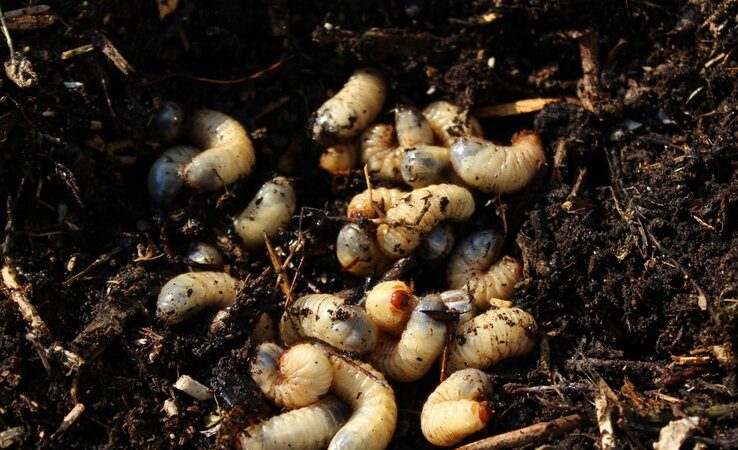
Identifying Grub Infestations
Are there suddenly thick, white larvae swarming in your flower pot or raised bed? Then they are white grubs that you need to remove quickly. Grubs are the five to seven centimeter long, thick, white larvae of various species of leaf beetles, including cockchafers, June bugs, garden leaf beetles, dung beetles, and rhinoceros beetles. These pests are a common nuisance for hobby gardeners, alongside spider mites and other garden pests.
Recognizing the Problem
Grubs usually come to light when digging up garden soil. These larvae live in the dark soil for between two and four years, feeding on dead plant parts and roots. This can quickly become a problem for plants in garden beds, especially for lawns, leading to bare patches.
What many amateur gardeners don’t know is that grubs can also make life difficult for potted plants and raised beds. The voracious larvae can stunt plant growth, cause dead plant parts, and result in drooping leaves. To confirm an infestation, water the pot or tub up to the edge of the soil. After two to three hours, the grubs will crawl to the surface.
Effective Removal Methods
Light Infestation: In the case of a light infestation, it is usually sufficient to pick off the larvae manually.
Nematodes: For larger containers or raised beds, tiny threadworms, known as nematodes, are an effective solution. These beneficial parasites nest in host animals such as grubs and reproduce in them. Spread the nematodes with irrigation water, following the manufacturer’s recommendations. The nematode species “Heterorhabditis bacteriophora” targets the larvae of garden leaf beetles, dung beetles, and June bugs, as well as the furrowed weevil.
Preventive Measures and Additional Control
Compost Caution: Grubs can enter your pots through compost enriched soil where beetles have laid eggs. This can occur with both homemade and purchased compost. To prevent this, be cautious when adding compost to your potting soil.
Neem-Based Products: In addition to manual collection and nematodes, plant protection products containing neem can be used to get rid of grubs.
Severe Infestations: If the infestation is severe, repotting might be necessary. However, repotting can stress plants, so it should not be done frequently.
Natural Remedies
Coffee Grounds: One possible remedy from the kitchen is coffee grounds. While not universally effective, some larvae are deterred by the smell of coffee grounds.
Protected Species and Useful Larvae
Protected Grubs: Rhinoceros and rose chafer beetles and their larvae are protected species and must not be controlled. Useful larvae can often be identified by their movement; they tend to move by turning on their backs, unlike pests that crawl or wriggle sideways or on their bellies.
Compost Benefits: Grubs are valuable helpers in compost heaps, feeding on green cuttings, leaves, and fallen fruit, which they digest to create valuable humus. This humus helps fertilize your plants.
What to Do with Collected Grubs
For small gardens, collecting grubs can be effective. Once collected, release them in a place where they won’t cause harm, such as in the compost. Never kill the grubs, as they can be beneficial in the right environment.
By understanding how to identify and manage grubs, you can maintain a healthy garden and protect your plants from these voracious pests. Implementing these methods will help you keep your garden thriving and beautiful.

